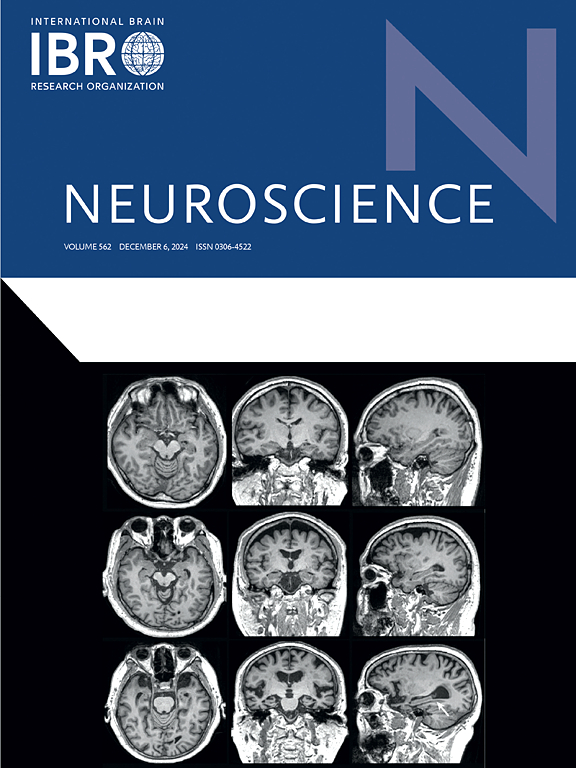Impaired glymphatic system function in relapsing-remitting multiple Sclerosis: Insights from diffusion tensor imaging along the perivascular space (DTI-ALPS)
IF 2.9
3区 医学
Q2 NEUROSCIENCES
引用次数: 0
Abstract
In relapsing-remitting multiple sclerosis (RRMS) patients, an enlarged perivascular space, cognitive impairment, and inflammatory immune response has been associated with the glymphatic dysfunction. Therefore, we employed the diffusion tensor image analysis along the perivascular space (DTI-ALPS) to evaluate glymphatic function in RRMS patients. The study included 39 RRMS patients and 34 age- and gender-matched healthy controls (HC). We calculated the DTI-ALPS index by placing regions of interest (ROIs) in projection and association fiber areas, adjusting for any unsuitable positions following visual inspection. Lesion masks were created based on T2 FLAIR images, and then the measured diffusion coefficients along the x, y, and z axes were calculated after removing the lesion areas, and then DTI-ALPS index was calculated. The DTI-ALPS index between the RRMS and HC groups using two-sample t-test using SPSS 27.0. Additionally, we calculated DTI metrics, including fractional anisotropy (FA), mean diffusivity (MD), axial diffusivity (AD), and radial diffusivity (RD). Furthermore, we explored the association between the DTI-ALPS index and DTI metrics, as well as clinical variables such as disease duration and clinical disability score. The RRMS group showed a significantly lower DTI-ALPS index compared to HC group, suggesting altered water diffusivity along perivascular spaces. The DTI-ALPS index demonstrated a negative correlation with clinical disability and disease duration, with RRMS patients exhibiting decreased FA and increased MD, AD, and RD. These results suggest that changes in the DTI-ALPS index may be associated with microstructural damage and disease progression in RRMS, and may indirectly indicate impaired glymphatic function in RRMS.
复发缓解型多发性硬化症中淋巴系统功能受损:沿血管周围空间扩散张量成像(DTI-ALPS)的见解
在复发缓解型多发性硬化症(RRMS)患者中,血管周围空间增大、认知障碍和炎症免疫反应与淋巴功能障碍有关。因此,我们采用沿血管周围间隙弥散张量图像分析(DTI-ALPS)来评估RRMS患者的淋巴功能。该研究包括39名RRMS患者和34名年龄和性别匹配的健康对照组(HC)。我们通过在投影和关联纤维区域放置感兴趣区域(roi)来计算DTI-ALPS指数,并在目视检查后调整任何不合适的位置。基于T2 FLAIR图像创建病灶掩模,去除病灶区域后计算测量的x、y、z轴扩散系数,计算DTI-ALPS指数。RRMS组与HC组间DTI-ALPS指数采用SPSS 27.0双样本t检验。此外,我们还计算了DTI指标,包括分数各向异性(FA)、平均扩散系数(MD)、轴向扩散系数(AD)和径向扩散系数(RD)。此外,我们探讨了DTI- alps指数与DTI指标之间的关系,以及疾病持续时间和临床残疾评分等临床变量。与HC组相比,RRMS组DTI-ALPS指数明显降低,表明水沿血管周围空间的弥漫性改变。DTI-ALPS指数与临床残疾和病程呈负相关,RRMS患者FA减少,MD、AD和RD增加。这些结果表明,DTI-ALPS指数的变化可能与RRMS的微结构损伤和疾病进展有关,并可能间接表明RRMS的淋巴功能受损。
本文章由计算机程序翻译,如有差异,请以英文原文为准。
求助全文
约1分钟内获得全文
求助全文
来源期刊

Neuroscience
医学-神经科学
CiteScore
6.20
自引率
0.00%
发文量
394
审稿时长
52 days
期刊介绍:
Neuroscience publishes papers describing the results of original research on any aspect of the scientific study of the nervous system. Any paper, however short, will be considered for publication provided that it reports significant, new and carefully confirmed findings with full experimental details.
 求助内容:
求助内容: 应助结果提醒方式:
应助结果提醒方式:


